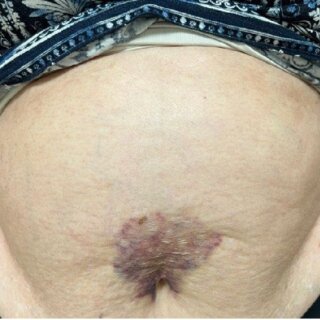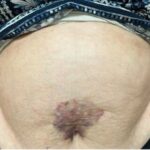Hernias happen when tissue pushes through a weak spot in muscle or connective tissue, often forming a visible bulge. The type of hernia, its cause, and risk factors vary depending on where it occurs. Recognizing symptoms is helpful, as it allows you to describe them clearly to a healthcare provider and determine when an exam is necessary. Here are four types of hernias, organized by their location and typical presentation:
1. Inguinal Hernia
This type of hernia develops in the groin area, where the abdominal wall has natural openings. It often appears as a bulge on one side and may become more noticeable when you cough, lift, or stand. The pain can range from a dull ache to a sharp, stabbing sensation. In men, the bulge may extend toward the scrotum, while in women, it may sit higher in the groin crease.
A small hernia may remain stable for some time, but symptoms such as sudden swelling, nausea, vomiting, or a tender, firm bulge indicate that urgent medical evaluation is necessary. You might find relief when lying down, as the tissue slips back through the opening. Factors such as repeated strain, heavy lifting, chronic cough, and a history of previous groin injuries may increase the risk of developing a hernia.
2. Femoral Hernia
A femoral hernia sits just below the groin crease, near the upper thigh. It affects women more than men, and excess pressure in the lower abdomen plays a role. While small femoral hernias may not have symptoms, they have a narrow neck and a higher risk of trapping bowel. Watch for:
- A small, round bulge below the groin that becomes more noticeable when standing
- Groin or upper thigh pain, especially with walking
- Nausea, vomiting, or severe tenderness over the bulge
If the area turns red or very painful, or if the bulge becomes hard and does not ease when lying down, seek urgent care. The symptoms may escalate quickly.
3. Incisional or Ventral Hernia
An incisional hernia occurs at a previous surgical site. A ventral hernia appears through a weak spot in the abdominal wall away from the groin area. The pain may worsen with coughing or lifting. Over time, the condition may enlarge, and skin irritation can develop over the bulge.
Signs include a bulge that flattens when lying down, a sensation of heaviness, and bloating. In some cases, the hernia traps fat or bowel, causing pain, nausea, vomiting, or a firm lump that doesn’t move with gentle pressure. Monitoring the size, tenderness, and any changes in digestion can help determine the next course of action.
4. Umbilical Hernia
This type appears near the belly button. In infants, the opening often closes as they grow; in adults, the defect tends to persist or widen. You may notice a soft bulge at the navel that becomes more pronounced when laughing, lifting, or straining. The area might feel tender after a large meal, yet it often relaxes with rest. While this type typically remain small, larger ones may protrude outward through the navel ring, leading to soreness. Redness, sharp pain, and a bulge that stays out signal a need for prompt evaluation, particularly if nausea or vomiting appears.
Get Surgery for a Hernia
Hernias vary in terms of location, symptoms, and the risk of trapping tissue; knowing the pattern helps you describe what you feel and identify potential red flags. If you notice a new bulge, persistent pain, or changes such as nausea or a firm, tender mass, schedule an appointment. Reach out today to discuss your symptoms and next steps with a qualified provider.









Leave a Reply